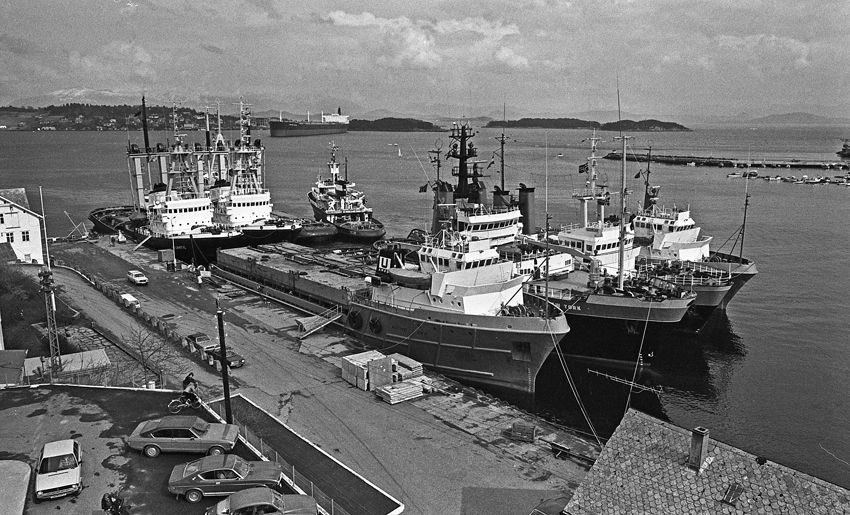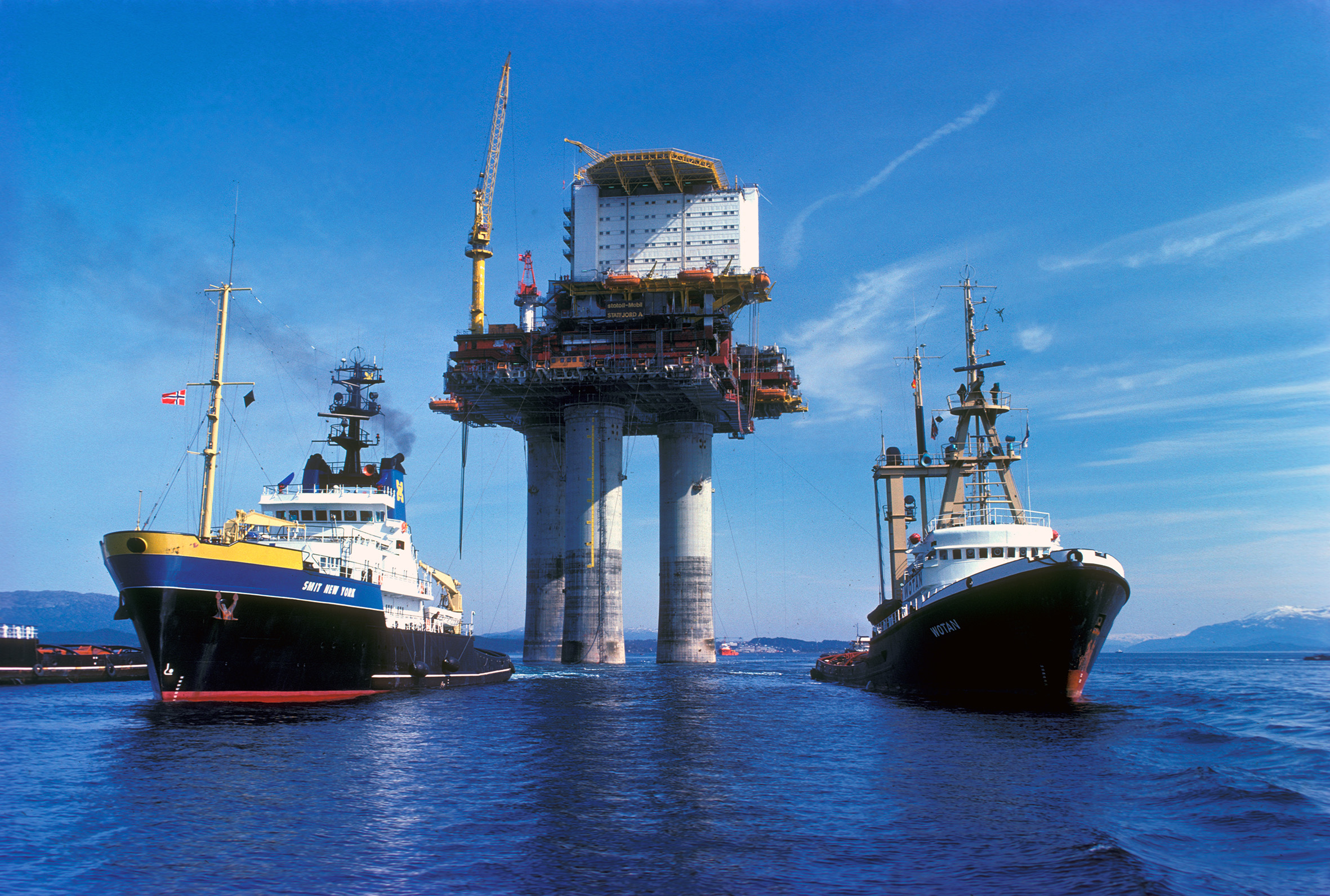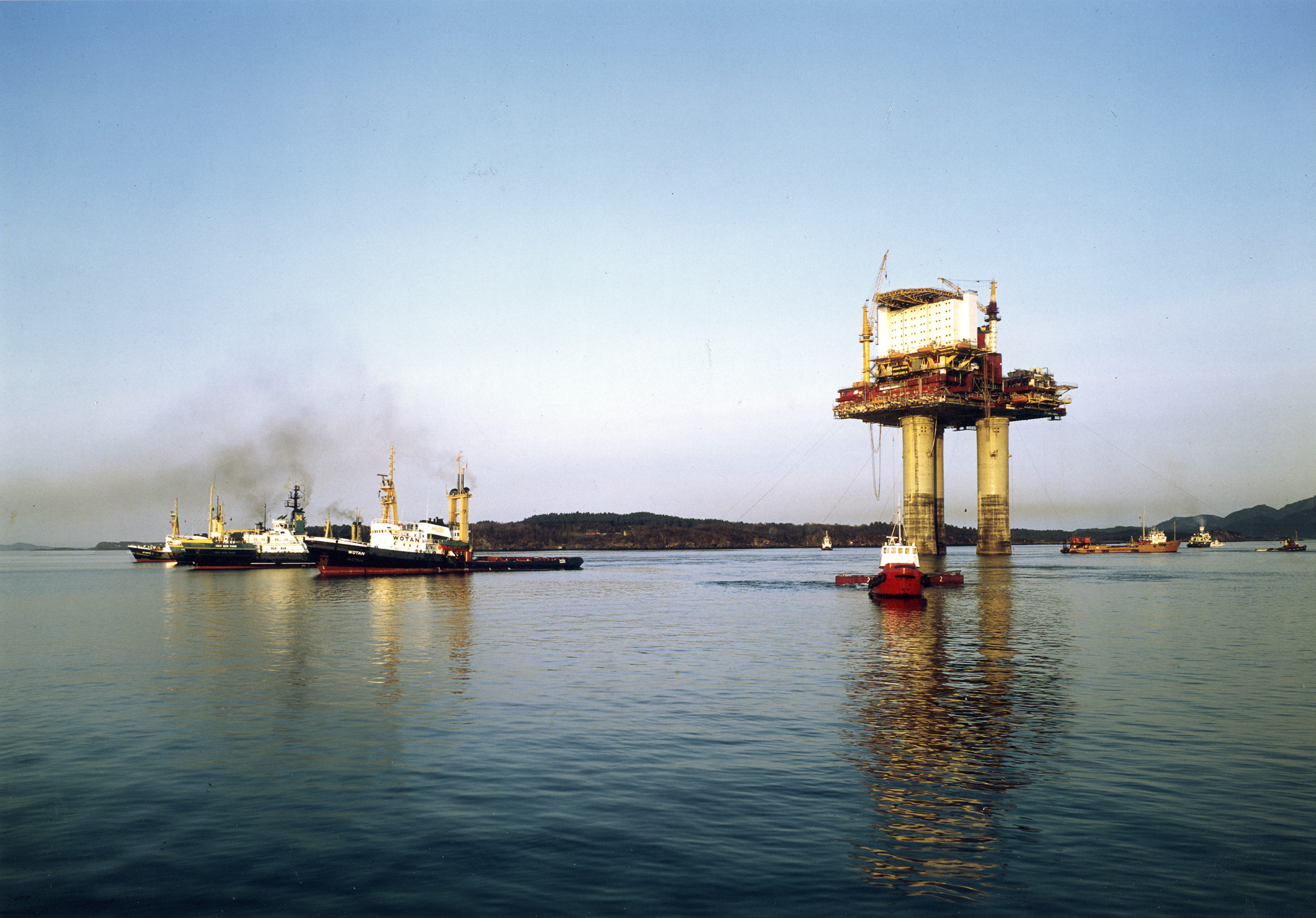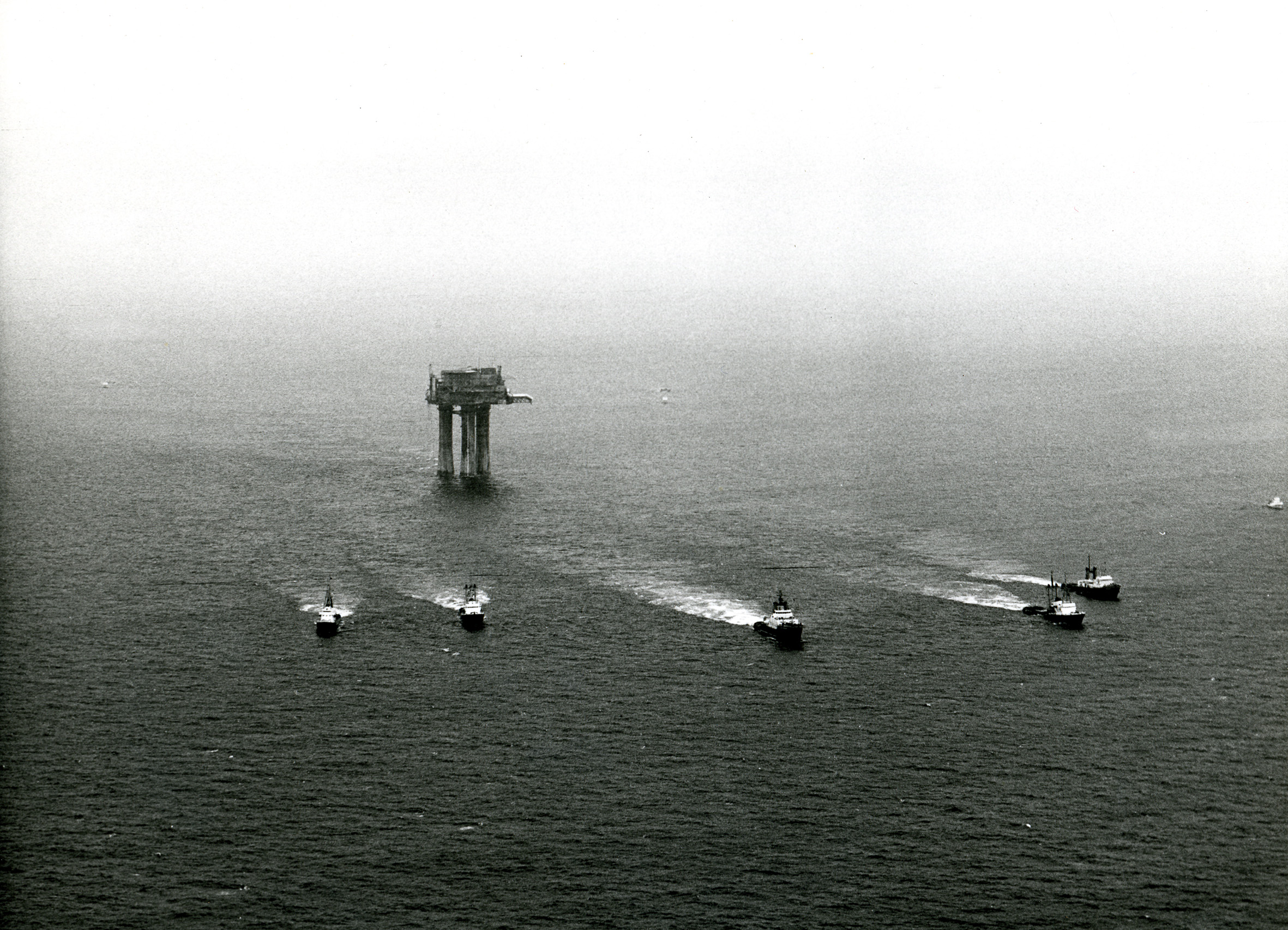On the way to work

 på vei til jobb,
på vei til jobb,Preparations for this operation had begun as early as Easter. They included the removal of 1 500 tonnes of steel scaffolding and other equipment, and activity in the final hours was hectic. All the mooring lines had to be cut, the tugs attached and – as the final step – the Norwegian Ship Control had to carry out an inspection.
The tow-out of what ranked at the time as the world’s largest offshore platform attracted enormous interest. Reporters from the Norwegian and international press hovered above in helicopters. Two camera teams captured the operation on film, and the Norwegian Broadcasting Corporation (NRK) was naturally present. And everyone worked under dream conditions – sunshine, blue skies and no wind.
 på vei til jobb,
på vei til jobb,Responsibility for the tow rested with the marine operations department of Norwegian Contractors (NC), under the command of Captain Kjell Werenskiold. Captain Knut Gaarder was in charge on the platform, along with a total crew of 50 who all had their specific duties.
They included personnel from NC, Mobil, the Norwegian Petroleum Directorate and Det Norske Veritas as well as meteorologists and insurance company representatives. In addition came the radio operator, catering and medical staff, surveyors, helicopter pilots and so forth.
 på vei til jobb,
på vei til jobb,The towropes were attached to the concrete cells below the waterline. As long as the tow was passing through inshore waters, the ropes were no longer than 130 metres. This required the use of counter-lines running up to the topside in order to regulate pull on the towropes and prevent the tugs being dragged down by the stern. After all, the load descended 117 metres beneath the sea and its base was 110 metres wide.
Caution was needed as the colossus moved down the fjord. At certain points, there was only 10 metres of clearance between it and the seabed. The surveyors were able to provide feedback at any time about the exact location. Although the seabed off Sletta was difficult to calculate, both echosounders and sonar were on board.
The route out to the field was 188 nautical miles long, or 350 kilometres in all. Eight of the world’s most powerful tugs were deployed on the first leg down the fjord, five in front and three steering from behind. They totalled almost 80 000 horsepower.
 på vei til jobb,
på vei til jobb,After almost a day, the platform had rounded Sletta and set a course across the open sea. The three aft tugs were demobilised and only five continued, with towrope lengths increased to 1 100 metres and the speed raised to two knots.
The final stage across the open sea took four days. For additional security, the two rescue cruisers Skomvær II and Sjøfareren acted as guardships. In addition, supply ships Active King and Active Rey followed the tow-out over its full length.
Statfjord A arrived at its location on the field on 8 May and was ballasted down to touch bottom at 15.23, 10 metres from the predetermined position. The tugs were positioned around the structure in a star formation and to ensure that it was evenly balanced.
When they encountered the bottom, the steel skirts cut four-five metres into the soil. Work on filling the gap between the cells and the seabed with grout could begin. Concrete carried on Active King and Active Rey was also injected between seabed and platform.
The towing gear was removed and sent ashore, while drilling began on three boreholes for piezometers which would be used to measure pore pressure in the seabed. Two of these were in shaft one and the third in shaft three.
Eight days later, NC delivered Statfjord A to Mobil and work on completing the platform could begin.



Sources:
Sunnhordaland. 4 May 1977. “Statfjord A i Nordsjøen”.
Norges Handels og Sjøfartstidende. 3 March 1977. “Statfjord A slepes ut 3. mai”.
Status, 6 May 1977. “Statfjord A plattformen under uttauing”.
Status, 26 May 1977. “Statfjord A på plass”.
Mobil Explorer, May 1977.
